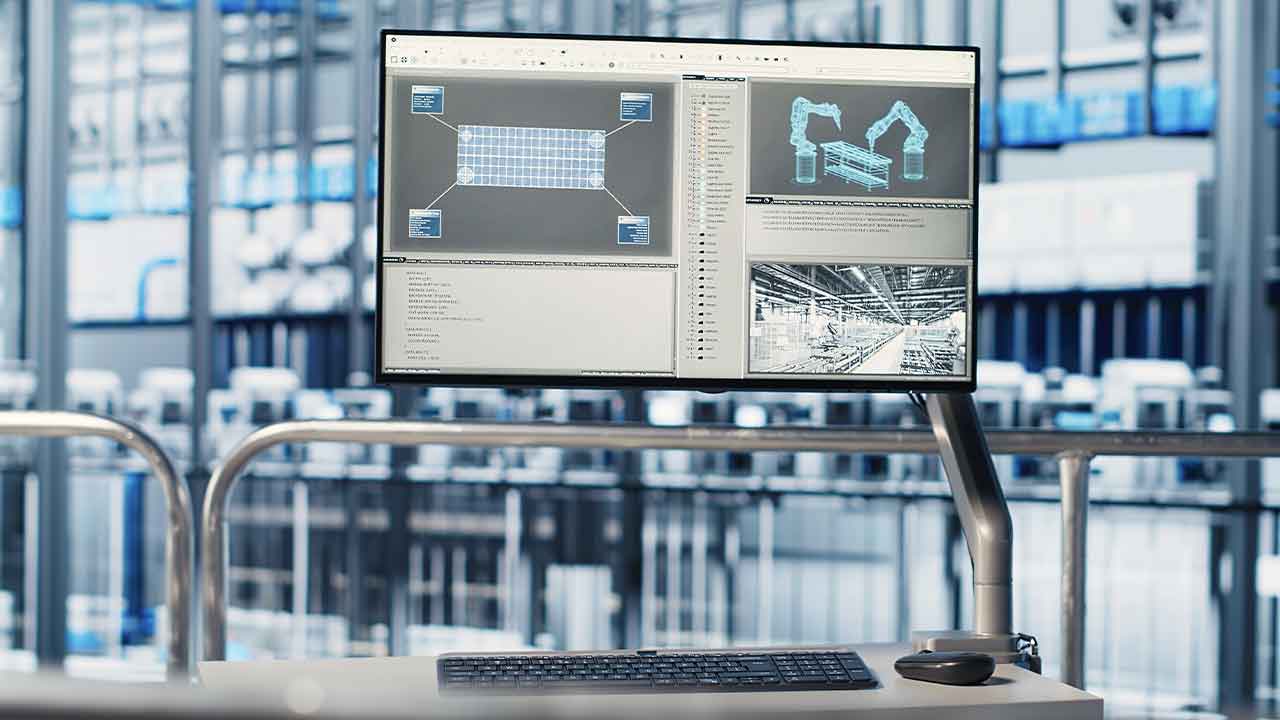IIoT-World / UniversalAutomation.Org Q&A
1. In one of your blogs published last year, you mentioned that “it’s time for universal automation.” What is holding us back?
What is universal automation? It is basically the transposition of what happens in the IT industry or the smartphone industry to the automation industry.
When you want to install an application on your Windows or Linux PC, you do not check the brand of the hardware before doing so. Same if you use an Android smartphone.
Fundamentally the future Digital Transformation, Industry 4.0, IIoT, call it what you want is about innovative software at all levels. The issue is, at the real-time control level, systems are all proprietary and application software written for one will not run on another. If I create an application on a Schneider controller, it won’t run on Rockwell or Siemens controller, which means I have to rewrite the code. This is extremely inefficient and must change.
And this is what universal automation is about.
The concept of universal automation requires a paradigm change. This change needs time, we are not in a sprint but in a marathon. And UniversalAutomation.org (UAO) was created to transform the universal automation concept into reality and create an eco-system of UAO-compliant products. UAO was setup in November 2021 by 9 founding members and has today close to 30 members and we are still looking for members to support the initiative and help extend the ecosystem.
2. I know you’re passionate about Industry 4.0 topic. How can we decouple automation hardware and software to enable Industry 4.0?
To decouple hardware and software, you need two things:
- A technology enabler which is the IEC 61499 standard: The IEC standard defines an event-driven Function Block for creating applications, and this event-driven Function Block is essentially a standalone software component in IT terms. Secondly, IEC 61499 has an Application Model which defines how to create an application by plugging together software components independently of the hardware. The hardware is defined by the Device Model. Then there is a System Model that maps the application to the devices. The result is vendor independent software components which I can plug together to create an application and then deploy to an architecture of universal automation compatible controllers – what we call “plug & produce”.
- But a technology is not enough, we need to have a community supporting it: UniversalAutomation.org (UAO) is that community. UAO is an independent nonprofit association with members from the user and vendor community. The goal of this organization is to manage, further develop and promote the use of a shared-source runtime execution engine based on the IEC 61499 standard.
This combination of a technology enabler of hardware and software decoupling combined with a community of users and vendors committed to the technology will enable our plug-and-produce vision where complex automation applications will be solved simply using proven-in-use software components: As an example, if I want to send data to Amazon Web Services, or if I want to connect my machine or process to a digital twin, or if I want to implement an advanced model-based control algorithm… Go find the proven-in-use software components instead of having to recreate it yourself. Find more about 10 Rules Behind Amazon’s Success You Can Use on Your Digital Transformation Journey.
3. What’s your favorite debate to have about the connected industry? Is there something you feel strongly about that may differ from standard practices/beliefs in the IIoT realm?
One of the biggest challenges is crossing the divide between real-time control applications and IT software applications. One of advantages of IEC 61499 is its ability to wrap algorithms programmed in high level languages in a graphical function block. In addition, the function block with its defined event/data interface has the same characteristics as a standalone software component. So, the standard, with its familiar looking graphical function block interface can not only be understood by automation engineers, but software engineers from the IT world immediately see the benefits of the vendor-independent software component approach. So, it is a design tool that bridges the two worlds in a way that engineers form both worlds can easily understand and work together to build the more complex IIoT applications. And the engineers running the plant can easily debug the application when something is not working as expected. So more complex IIoT functions involving analytics etc can be deployed & maintained on the factory floor.
4. What is the difference between UAO and other open standards like OPAF or NAMUR…? Why not Open Source?
UniversalAutomation.org is a technology enabler for other initiatives aiming at a more open automation world. We see for example the first implementation of the UniversalAutomaiton.org (UAO) technology to implement the MTP standard or the use of UAO on a OPAF test bed led by ExxonMobil.
For example, OPAF defines an information model for continuous process control applications. UniversalAutomation.Org provides a technology to implement the OPAF information model as a library. Once implemented, UAO-compliant devices can become OPAF-compliant devices by simply using the OPAF library. So UAO can accelerate the adoption of the OPAF information model.
UniversalAutomation.Org is not creating a new standard. UniversalAutomation.org is managing a reference runtime implementation of the IEC 61499 standard on a shared source basis which is similar to what is done in the IT world.
The UAO shared source governance model obliges the members to agree on new features and as such maintains the portability and interoperability between different devices. Going open source too early could introduce forks in the runtime which could break the interoperability/portability principles.
So at the moment, UAO starts with this shared source principle and at a later date once critical mass is achieved, the organization might decide to change course and go open source.
Page Break
5. Is it really a game-changer in the industry?
The current automation standard has done a good job to bring the industry to where it is today. But as the investment in software increases to implement the next IIoT and Industry 4.0 use cases, we need to move away from closed proprietary programming to open plug & produce programming based on vendor-independent software components. This is a major paradigm shift for the automation industry.
6. Why should members join UniversalAutomation.org?
This depends on the type of members:
For users, they sponsor the initiative. If they want to see this paradigm change, see more offers coming on the market and become truly hardware independent, then joining the initiative will encourage the automation vendors to join.
Moreover, they can influence the next development of the runtime execution engine since it is managed by the organization. On top of that, users will improve their return-on-investment on software by encapsulating their know-how in vendor-independent software. And the decoupling of software from hardware will make it end-of-life proof. For users, the last point is that UAO train their members on the technology, with access to “UAO Train & Try” tool.
For vendors, being a member grants them access to the UAO runtime execution engine which enables a new category of automation device. This is an opportunity to sahre R&D costs thanks to the platforming approach. Vendors can influence the next development of the runtime execution engine and encapsulate their know-how in vendor-independent software. Being a member today of UAO positions the vendor as a thought-leader and innovator on its market.
This article was written by John Conway, President, UniversalAutomation.



